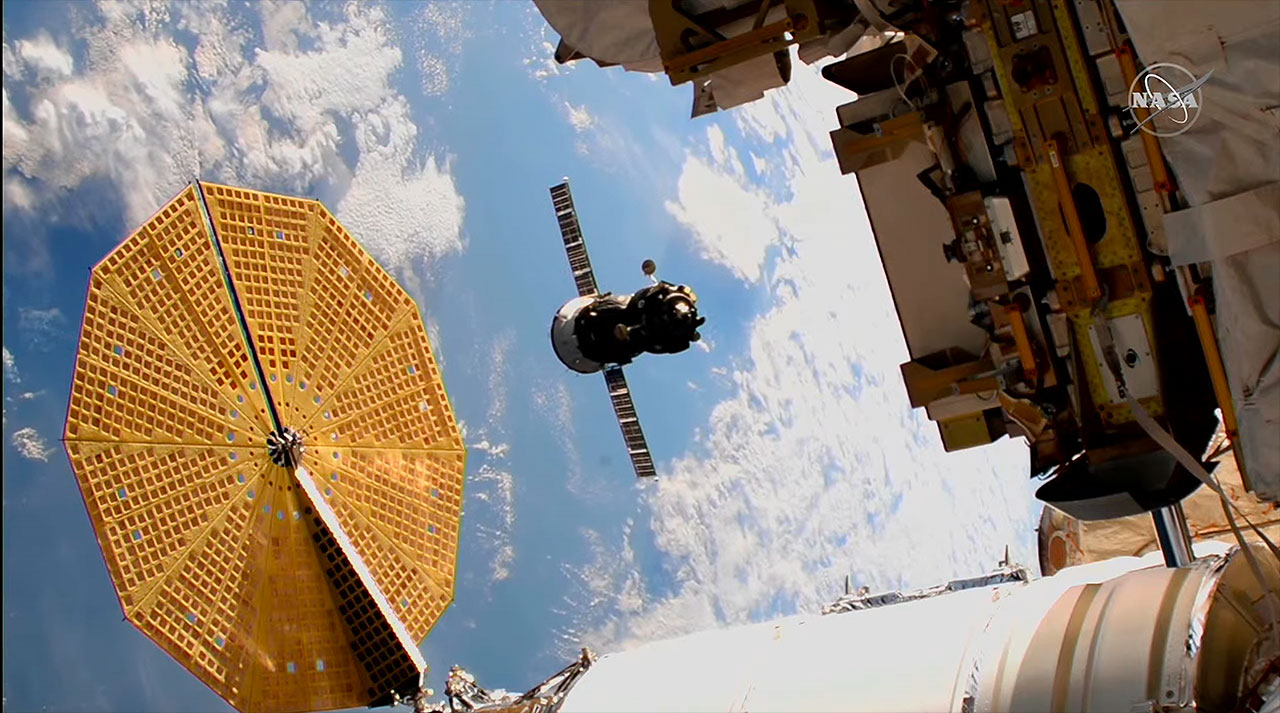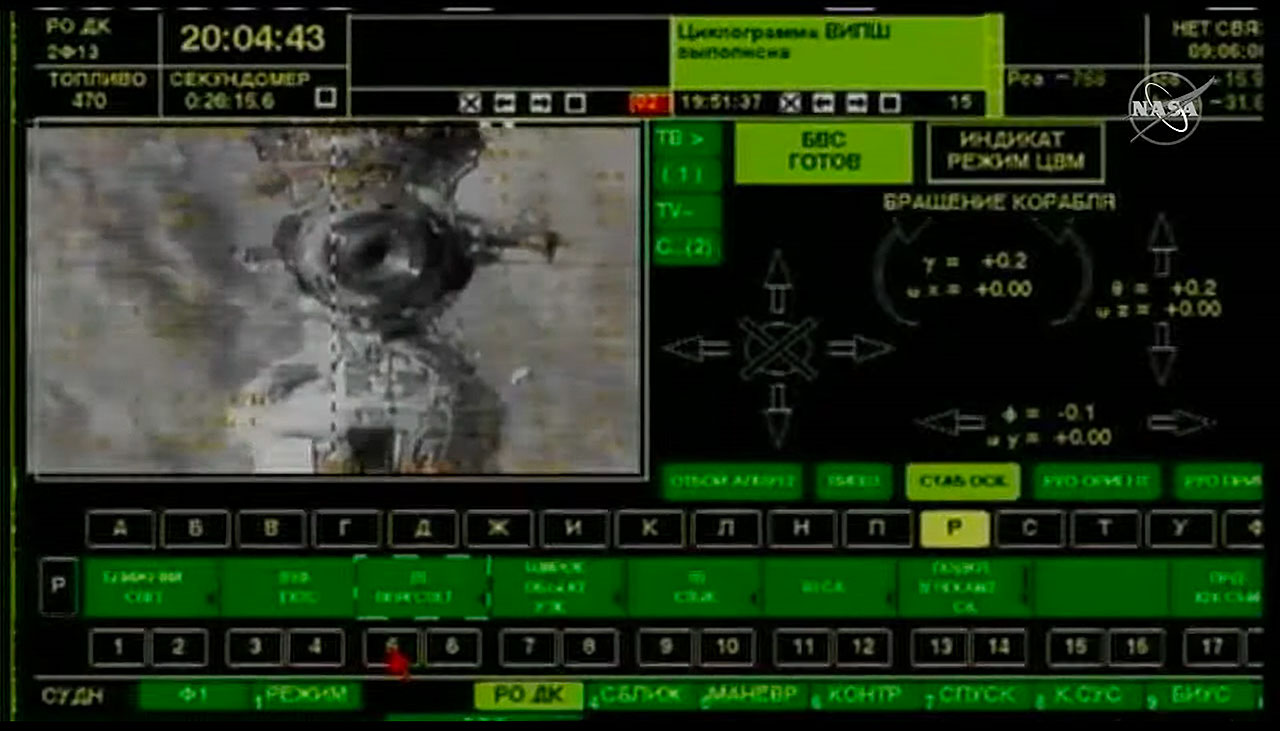Space station crew moves Soyuz spacecraft to new parking spot ahead of new arrivals
Two Russian cosmonauts and a NASA astronaut took a quick spin around the International Space Station on Friday (March 19), as they relocated their Soyuz spacecraft in preparation for the arrival of the next crew.
Expedition 64 commander Sergey Ryzhikov and flight engineer Sergey Kud-Sverchkov, both of the Russian state space corporation Roscosmos, and flight engineer Kate Rubins of NASA, donned their Sokol pressure suits, climbed aboard their Russian Soyuz MS-17 spacecraft and then undocked from the Earth-facing port of the station's Rassvet Mini-Research Module 1 (MRM 1) at 12:38 p.m. EDT (1638 GMT).
"Separation!" Ryzhikov radioed to Russia's mission control outside of Moscow as the Soyuz left the space station.
Related: How NASA booked a last-minute trip to space on a Russian Soyuz
Backing slowly away from Rassvet at a rate of less than one foot per second (0.2 meters per second), the Soyuz reached a separation distance of about 130 feet (40 meters) and paused while ground controllers and Ryzhikov made sure the Soyuz’s systems were properly configured.
Ryzhikov piloted the Soyuz on a fly-around of the Russian segment of the orbiting laboratory, from nadir to zenith, passing by the docked Progress MS-16 and Progress MS-14 cargo vehicles while maneuvering to the space-facing port of the Poisk Mini-Research Module 2 (MRM 2).
After another brief pause to ensure the Soyuz was aligned with Poisk, Ryzhikov, Kud-Sverchkov and Rubins reconnected with the space staton at 1:12 p.m. EDT (1712 GMT), 34 minutes after undocking.
Breaking space news, the latest updates on rocket launches, skywatching events and more!
"Standing by for contact. Contact confirmed!" said Ryzhikov.
"Congratulations with the successful docking," replied mission control.

The hatches between the Soyuz and station were expected to open at about 3:30 p.m. EDT (1930 GMT).
The relocation of Soyuz MS-17 freed up the Rassvet port for the arrival of another Soyuz spacecraft, MS-18, which will launch three crewmembers for the station's Expedition 65 in April. Roscosmos cosmonauts Oleg Novitsky and Pyotr Dubrov, together with NASA astronaut Mark Vande Hei, are scheduled to lift off on April 9 from Russia's Baikonur Cosmodrome in Kazakhstan.
Related: The International Space Station
The Soyuz move was made to keep Poisk open for future spacewalks. The module was used for the first time as an airlock in November 2020. With the MS-17 crew set to depart the space station for Earth on April 17, and docking Soyuz MS-18 at the Rassvet, Poisk will be open to support Russian extravehicular activities.
Soyuz relocations are not a regular occurrence, but are not uncommon either. In the 20-year history of human operations on the International Space Stations, crews have now redocked their Soyuz spacecraft at different ports 19 times. An additional 29 Soyuz moves were made by cosmonauts on prior Russian space stations, for a total 48 relocations since 1978.
Robert Pearlman is a Space.com contributing writer and the editor of collectSPACE.com, a Space.com partner site and the leading space history news publication. Follow collectSPACE on Facebook and on Twitter at @collectSPACE. Follow us @Spacedotcom and Facebook.

Robert Pearlman is a space historian, journalist and the founder and editor of collectSPACE.com, a daily news publication and community devoted to space history with a particular focus on how and where space exploration intersects with pop culture. Pearlman is also a contributing writer for Space.com and co-author of "Space Stations: The Art, Science, and Reality of Working in Space” published by Smithsonian Books in 2018.
In 2009, he was inducted into the U.S. Space Camp Hall of Fame in Huntsville, Alabama. In 2021, he was honored by the American Astronautical Society with the Ordway Award for Sustained Excellence in Spaceflight History. In 2023, the National Space Club Florida Committee recognized Pearlman with the Kolcum News and Communications Award for excellence in telling the space story along the Space Coast and throughout the world.


